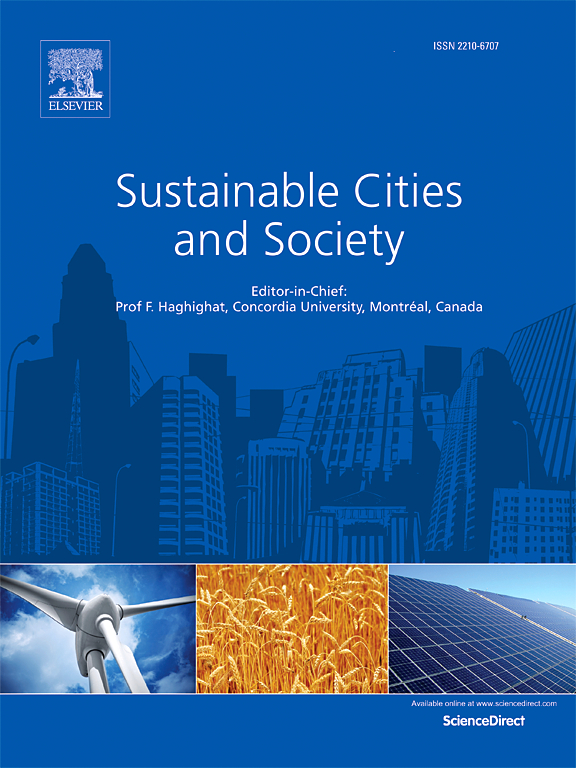Urbanization significantly impacts the long-term and inner-outer changes in urban vegetation phenology
IF 10.5
1区 工程技术
Q1 CONSTRUCTION & BUILDING TECHNOLOGY
引用次数: 0
Abstract
Clarifying the spatio-temporal characteristics of urban vegetation phenology (UVP) is essential for understanding the potential effects of future climate change on vegetation growth. However, current studies lack quantitative analysis of urbanization impacts on spatio-temporal characteristics in UVP. This study measured UVP (including start, end and length of the growing season: SOS, EOS and GSL) changes in both long-term (from 2003 to 2020) and inner-outer city (between inner and outer city areas) in 365 Chinese cities using multi-source data. SHapley Additive exPlanations (SHAP) and accumulated local effect models were used to identify the key drivers and their changing patterns. The results indicated that UVP changed more consistently in inner-outer changes than in long-term changes. SOS in 75 % of cities advanced by -15.96±10.30 days in long-term changes, while GSL and EOS in 74 % and 72 % of cities extended by 23.89±13.81 days and delayed by 11.93±8.99 days, respectively. SOS in 80 % of cities advanced in inner-outer changes (-12.81±9.33 days), and GSL and EOS in 85 % and 73 % of cities extended and delayed (18.28±13.17 and 10.91±7.59 days), respectively. Long-term and inner-outer changes in UVP showed significant differences across city sizes. In the climate zones from south to north, there was a clear gradient in UVP in long-term changes, but little change in UVP in inner-outer changes. SHAP analyses revealed that temperature is the most important factor affecting UVP, followed by night lighting, radiation, and these drivers showed complex non-linear relationships with UVP. This study clarified the spatio-temporal characteristics of UVP, which contributed to a better understanding of the carbon sink potential of urban vegetation.
求助全文
约1分钟内获得全文
求助全文
来源期刊

Sustainable Cities and Society
Social Sciences-Geography, Planning and Development
CiteScore
22.00
自引率
13.70%
发文量
810
审稿时长
27 days
期刊介绍:
Sustainable Cities and Society (SCS) is an international journal that focuses on fundamental and applied research to promote environmentally sustainable and socially resilient cities. The journal welcomes cross-cutting, multi-disciplinary research in various areas, including:
1. Smart cities and resilient environments;
2. Alternative/clean energy sources, energy distribution, distributed energy generation, and energy demand reduction/management;
3. Monitoring and improving air quality in built environment and cities (e.g., healthy built environment and air quality management);
4. Energy efficient, low/zero carbon, and green buildings/communities;
5. Climate change mitigation and adaptation in urban environments;
6. Green infrastructure and BMPs;
7. Environmental Footprint accounting and management;
8. Urban agriculture and forestry;
9. ICT, smart grid and intelligent infrastructure;
10. Urban design/planning, regulations, legislation, certification, economics, and policy;
11. Social aspects, impacts and resiliency of cities;
12. Behavior monitoring, analysis and change within urban communities;
13. Health monitoring and improvement;
14. Nexus issues related to sustainable cities and societies;
15. Smart city governance;
16. Decision Support Systems for trade-off and uncertainty analysis for improved management of cities and society;
17. Big data, machine learning, and artificial intelligence applications and case studies;
18. Critical infrastructure protection, including security, privacy, forensics, and reliability issues of cyber-physical systems.
19. Water footprint reduction and urban water distribution, harvesting, treatment, reuse and management;
20. Waste reduction and recycling;
21. Wastewater collection, treatment and recycling;
22. Smart, clean and healthy transportation systems and infrastructure;
 求助内容:
求助内容: 应助结果提醒方式:
应助结果提醒方式:


